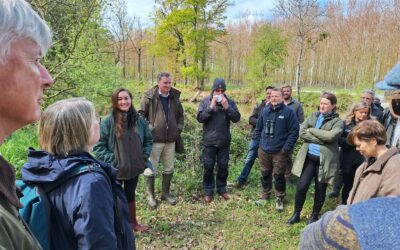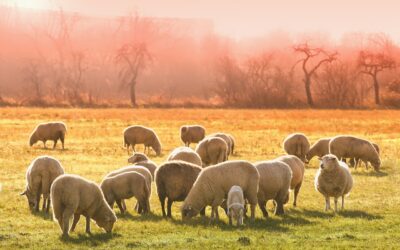
During lockdown last year, I read an interesting article published by Vogue on sustainable fashion. As I scrolled through this article, I was thrilled that it focused on the role of regenerative agriculture in the fashion industry.
At just the beginning of planning for Ewhurst Park, my estate-wide biodiversity project, it was inspiring to see how these practices expand beyond the food and agriculture industry. Over a year later, with phase I of Ewhurst Park almost complete, I find myself reflecting on this article, viewing it from a new lens after my first-hand experience with regenerative farming. As I acknowledge the impact that regenerative agriculture has had on Ewhurst Park in less than a year, I can only imagine the larger role it can play in our society.
Known for its fast pace and constant change, the fashion industry does not have a climate-friendly history. Given that most of our clothes come from plants, it is interesting to think that the industry is constantly taking from the Earth without giving anything back. However, as noted in the Vogue article, that is all about to change!
Regenerative agriculture focuses on replenishing the plants, soil, and nature surrounding it without using harmful chemicals and pesticides. As I have found at Ewhurst Park and other regenerative farms across England, regenerative farming is all about the soil. High-quality soil is not only great for the land but also helps with climate change as it can capture carbon from our atmosphere. Current agricultural practices, such as tilling, overgrazing, or churning the soil, create soil that cannot absorb carbon and therefore exasperates the effects of climate change.
To help remove this greenhouse gas, cotton farms throughout India have switched to regenerative farming techniques. Growing organic cotton, these farms utilize natural crops and insects in place of pesticides. Rather than covering the crops with a tarp, snap peas are planted to shade the soil. Further, they include “pollinator strips,” which attract bees to pollinate the area, or “trap crops,” to divert harmful pests from the cotton crops. These farms have been successful, with fashion designer Chrisy Dawn and international clothing company Patagonia using cotton from these regenerative farms. It is great to see the sustainability measures these companies are taking!
The Vogue article concludes with a quote from Rebecca Burgess, a specialist in regenerative textile systems, stating that in ways, the fashion industry is more poised than the food industry to lead the conversation on regenerative agriculture as fashion is more permanent. While I am delighted to see the use of regenerative agriculture in the fashion industry, I’m going to stick to agricultural practices for now. But who knows, maybe Ewhurst Park will have a cotton crop or two in the future!



